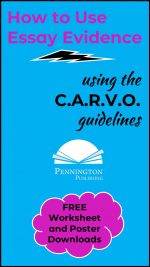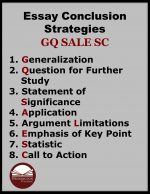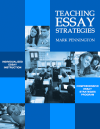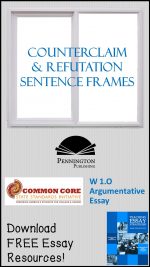Tucked away in the often-overlooked recesses of the Common Core State Standards, the Anchor Standards for Language includes a practical, if somewhat ambiguous Standard: Knowledge of Language L.3. Over the past decade, I’ve noted with interest that the educational community has cherry-picked certain Standards and ignored others.
As an author of numerous ELA curricula, I assumed that the initial focus (rightfully so) of district curriculum implementation would be the reading, writing, and math Standards. In my field, I decided to write in anticipation of the next focus area. I assumed that, for ELA, it would center on the Anchor Standards for Language. These Language Standards were quite revolutionary in some circles because the Common Core authors emphasized the direct instruction of grammar, usage, and mechanics. Furthermore, the authors provocatively addressed the issue of non-Standard English and seemed to swing the pendulum toward a traditional grammar approach. Think rules, correct and incorrect usage, and application.
Over the next two years I poured hours into the development of comprehensive grades 4, 5, 6, 7, 8, and high school programs to teach all of the Standards in the Language Strand. My Teaching the Language Strand title was ill-chosen. Much to my chagrin, ELA teachers rarely got past the Reading and Writing Standards. I moved the title to the subtitle position and re-named the series Grammar, Mechanics, Spelling, and Vocabulary . The longest title in the history of educational publishing. Subsequently, I broke the comprehensive program into affordable grade-level slices and achieved more sales: Teaching Grammar and Mechanics, Writing Openers Language Application, Differentiated Spelling Instruction, and the Common Core Vocabulary Toolkit.

Syntax in Reading and Writing
And now, Syntax in Reading and Writing.
Even within the largely ignored Anchor Standards for Language, one Standard, in particular, has received scant recognition:
The Hidden Gem: Knowledge of Language Standard L.3
CCSS.ELA-LITERACY.CCRA.L.3
Apply knowledge of language to understand how language functions in different contexts, to make effective choices for meaning or style, and to comprehend more fully when reading or listening.
The key word in the Knowledge of Language Standard is apply. The somewhat ambiguous term, language, refers to the other five Standards in the Language Strand which encompass grammar, usage, mechanics, spelling, and vocabulary. The purpose of this practical Standard is to help students more fully comprehend how language impacts reading and informs writing and apply this knowledge. The slice of my Grammar, Mechanics, Spelling, and Vocabulary series, which aligns to the Knowledge of Language Standards L.3 is Writing Openers Language Application.
…
Writing Openers Language Application (Grades 4, 5, 6, 7, and 8) provides 56 whole-class, twice-per-week “quick writes,” designed to help students learn, practice, and apply grade-level grammar, usage, mechanics, sentence structure, and sentence variety Standards. The Common Core authors are certainly right that grammar should not be taught solely in isolation. Grammatical instruction needs to be taught in the reading and writing contexts and applied in spoken and written language.
The grade-level Writing Openers programs align to the Anchor Standards for Language:
Each of the 56 lessons takes about 5-10 minutes to complete. Lessons are derived from the Conventions of Standard English (L. 1, 2), Knowledge and Use of Language Standards (L. 3), and the Language Progressive Skills found in the Common Core State Standards Language Strand. The lessons help students “Use knowledge of language and its conventions when writing, speaking, reading, or listening” (Common Core Language Strand Knowledge of Language). In other words, lots of practice in sentence revision, sentence combination, and identification of and application of grammar.
The lessons are formatted for classroom display and interactive instruction. The teacher reads and explains the Lesson Focus and Example(s) while students follow along on their own accompanying worksheet. Next, the students annotate the Lesson Focus and summarize the Key Idea(s). Afterwards, the students complete the Practice Section (sentence combining, sentence revisions). Finally, students complete the My Own Sentence writing task. The My Own Sentence serves as the formative assessment to determine whether students have mastered the Lesson Focus.
Plus, get 13 sentence structure worksheets with answers. Worksheets include simple subjects, compound subjects, simple predicates, compound predicates, simple sentences, compound sentences, complex sentences, compound-complex sentences, identifying sentence fragments, revising sentence fragments, identifying sentence run-ons, revising sentence run-ons, and identifying parallelism.
FREE SAMPLE LESSONS TO TEST-DRIVE THE PROGRAMS
Preview the Writing Openers Language Application (Grade 4) Lessons HERE.
Preview the Writing Openers Language Application (Grade 5) Lessons HERE.
Preview the Writing Openers Language Application (Grade 6) Lessons HERE.
Preview the Writing Openers Language Application (Grade 7) Lessons HERE.
Preview the Writing Openers Language Application (Grade 8) Lessons HERE.
Get the Grammar and Mechanics Grades 4-8 Instructional Scope and Sequence FREE Resource:

Get the Diagnostic Grammar and Usage Assessment FREE Resource:

Get the Diagnostic Mechanics Assessment FREE Resource:

Grammar/Mechanics, Spelling/Vocabulary, Writing
Anchor Standards for Language, argumentative essays, body paragraphs, Common Core, Common Core literacy standards Process writing, Common Core Standards, Common Core State Standards, common core writing standards, composition, conclusion, concrete detail, counterpoint, end notes, exposition, expository, first person, five paragraph essay, funnel paragraphs, hooks, how to teach essays, informational essays, introduction, Knowledge of Language, leads, Mark Pennington, MLA writing, narrative, on demand writing, parallelism, Pennington Manual of Style, persuasive, persuasive essays, research papers, research reports, second person, sentence revisions, sentence variety, step up to writing, teach essays, Teaching Essay Strategies, thesis, thesis statement, third person, timed writing, topic sentences, voice, writers workshop, writing applications, writing conferences, writing domains, writing fluency, writing mini lessons, writing openers, Writing Openers Language Application, writing process, writing project, writing prompts, writing rules, writing strategies, writing style, writing worksheets












